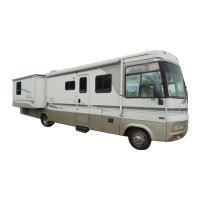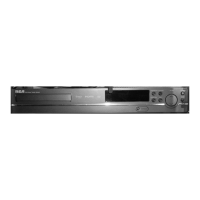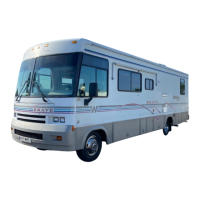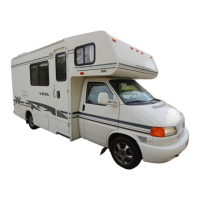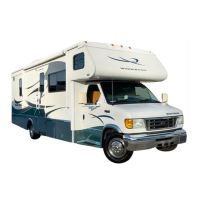Do you have a question about the Winnebago Adventurer 35F and is the answer not in the manual?
Explains the meaning of Danger, Warning, Caution, Notice, and Note labels used in the manual.
Instructs on reporting potential safety defects to NHTSA and Winnebago Industries.
Lists general safety rules for seat belt use, pregnant women, child restraints, and seat positioning.
Offers critical safety advice for operating the motorhome, including seat belt use and slideout operation.
Warns about refueling procedures, potential hazards like fire and explosion from propane.
Provides procedures for detecting and responding to propane gas leaks, including safety warnings.
Warns about carbon monoxide hazards from engine exhaust and combustion, recommending ventilation.
Details the smoke alarm's function and recommends regular testing and battery replacement.
Locates the fire extinguisher and advises on regular inspection and replacement.
Provides crucial electrical safety precautions to prevent fatal shocks and equipment damage.
Explains the proper use, fastening, and care of lap and lap-shoulder seat belts for passenger safety.
Provides guidelines for selecting and installing child restraint systems for passenger safety.
Explains the switch to disconnect chassis batteries for storage to prevent parasitic drain.
Details refrigerator operation on AC or propane, explaining the cooling cycle and leveling requirements.
Explains the operation of the propane range and oven, including lighting burners and using the glass cover.
Explains the panel for monitoring tank levels, battery charge, and controlling systems.
Details dual-power water heater operation and furnace system controls.
Explains the propane system's function for powering appliances safely and economically.
Emphasizes safety precautions, including leak detection and avoiding tampering with components.
Lists critical safety precautions for handling electrical components and preventing shocks.
Details the fresh water system, water sources, and tank filling methods.
Outlines methods for winterizing the water system: blow-out or antifreeze fill.
Presents a chart detailing recommended maintenance schedules for various systems and components.
Explains how to load the vehicle, considering weight limits and securing items.
Details how to weigh the loaded motorhome to determine proper load distribution.
Covers hitch capacity, tongue weight, towing guidelines, and trailer brake requirements.
Defines GVWR, GAWR, GCWR, and critical towing considerations.
| Make | Winnebago |
|---|---|
| Model | Adventurer 35F |
| Fuel Type | Gasoline |
| Horsepower | 350 HP |
| Torque | 468 lb-ft |
| Transmission | 6-speed automatic |
| Air Conditioning | Yes |
| Chassis | Ford F53 |
| Category | Motorhome |
| Exterior Width | 8 ft 5.5 in |
| GVWR | 22, 000 lbs |
| Generator | Onan 5.5 kW |
| Fuel Capacity | 80 gallons |






